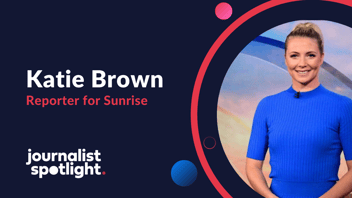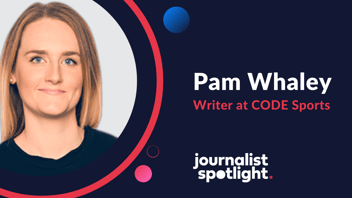Journalist Spotlight | Interview with Daniel Browning, Editor of Indigenous Radio & Host of The Arts Show at ABC RN
Daniel Browning is a writer, journalist, radio broadcaster, documentary maker and sound artist. He is also the author of the collection, Close to the Subject, which won the 2024 Victorian Premier’s Literary Award for Indigenous Writing. The collection, an eclectic mix of literary genres and mediums, is a testament to Browning’s long and accomplished career in the arts.
A collection of your work, ‘Close to the Subject’, harkens back to what you said about editorial distance being a privilege. How did this philosophy come about and how has it impacted your interaction with art and artists in a personal and professional capacity?
Although it might be heretical for a journalist to say this, I think there’s something to be said for being close to your subject. When my editor at Magabala Books, Arlie Alizzi and I decided to frame the collection, it was that phrase that leapt out for Arlie.
I use the term pretty freely when I talk about my journalism. I was responding to the perception that non white journalists are incapable of editorial distance, objectivity and independence when we report on our own communities, that we can’t be professional when it comes to our own mob. The vanity of objectivity and editorial distance lies in the assumption that we have it.
When I was in training, I noticed that my work was being scrutinised in a way that was not constructive, the assumption being I was inherently incapable of being balanced or fair-minded when I was close to the subject (the subject being other blackfellas and their stories). Some journalists are given the benefit of the doubt. They are covered by a protective veil of whiteness. No one asks what their investment in a story is. They are assumed to be neutral. Subliminally perhaps, whiteness has been equated with neutrality, trustworthiness and level-headedness. Anything other than that is subtly framed as high key, atonal and subjective, too diffuse to make sense. The media itself problematises non-whiteness, and it does it subliminally.
In the way I practise journalism, I try to draw people out, and the best interview subjects are the reluctant ones. If you want to really get at the truth of something you have to throw everything at it. Sit down, talk it over. Come back another day. If you want to be trusted, be trustworthy. I don’t produce the kind of journalism that makes adversaries, generally speaking (though somehow I manage to, surprisingly). But I do work with people’s stories and their cultural being, things that are precious to them. I have to be mindful, and always employ an ethics of care around my work. It’s the same with artists. They are often fragile, or blustery, or both.
I try to be personable, and to engage as deeply as I can in the artwork, at the point at which we agree to meet. If there’s not much there, it will be a short conversation. But then people are fascinating, so if I don’t find much of a way in through the work, I find a human story to sustain me. Everyone has a catalogue within them. The sidebar, the hidden note, that’s where you find the most productive lines of enquiry.
I think objectivity, editorial distance and balance can be a matter of perception, and those principles can be used as a performative trick. The kind of journalism I write isn’t a lesser form because I’m close to the subject. On the contrary, I think journalists should only write stories about things they care about.
You have been a journalist, critic, editor and producer. How has this multidisciplinary and multi-faceted approach enriched your experience with art?
I don’t see it as a multidisciplinary approach. I’m always mediating the story, trying to amplify the best aspect of something rather than focus on the messy bit in the composition. If something is not to my taste, I have to articulate that without being disrespectful. Because at the end of the day the artwork is not a piece of flesh, it’s not a severed limb!
If an artist makes work, they do so for it to be observed. When we observe something, we assess it from multiple angles, shape, colour, texture. We decide whether it makes us feel good, bad or unmoved. That judgement is the answer to the artist’s challenge. If you don’t want to be challenged, don’t make work.
Artists tell us where to look, and can help us make sense of the world. They are not prophets or sages but they are makers, and if they’re any good, they are critical readers of the culture they exist within. That said, they can be as paralysed by moral confusion on any particular given issue as the next person.
What can be done/in what other ways do you hope for First Nations and Aboriginal art to get the recognition it deserves from both the national and international art community?
I don’t particularly want recognition for the art. We just had a referendum on that and the vote went completely the other way! It stands on its own and it doesn’t need me. But what I can do is explain what I see, or the cultural context that gives a particular artwork its power, the things you don’t see.
The artwork is doing the work of diplomacy and memory, and these are encoded messages. Artworks by First Nations artists aren’t just decoration. They function as political oratory, theatre, visual storytelling, knowledge transfer, cultural continuity. They are also social documents.
In the absence of a political voice or something we might call land justice, the art does a lot of work. One thing it does superbly is communicate our subjectivity, our perspective, as if we were the centre of gravity and not othered.
I would say that there is a vein of superficiality in some artwork being made that riffs on ‘the Aboriginal position’, as Vernon Ah Kee puts it. Art which has only a cosmetic relationship with the trauma it describes. I do hope that one day Indigenous artists can make artwork that doesn’t need me to comment on it, to talk about the deeper issues the work points to, because we will have resolved them.
What advice would you give to emerging art writers and critics?
I hardly feel entitled to give anybody advice on anything. But if I were an emerging artist I’d ask myself if the stuff I would put into the world was more stuff destined for landfill or if it’s really needed.
What is the singularity of my work, and is it so singular that what it gives out justifies the expense. In environmental terms, the resources spent producing the raw materials, the paint, the timber, the megapixels, or the energy it takes to light it, or make it flicker. If what you have to say is so singular, and you really test that proposition honestly and still feel the same, then keep making it. You know instinctively when it’s time to quit something. Retreat. Do what I did, start writing about it instead! Beautify the world or deepen the conversation that way.
To the emerging critic I’d say the same thing, but perhaps in reverse. If your words aren’t constructive and don’t deepen the conversation, then maybe take a life drawing class. Also, ask yourself what critical perspective do I bring that is missing? Mind you, the level of art criticism in Australia is negligible and no one seems to care. The beauty of art lies in the very thing that frustrates those who don’t see its value. It is unnecessary. The lack of necessity—I mean, it literally has no functional use—and the fact we do it instinctively as humans is what makes it so profound and meaningful.
Is there any upcoming work from you or from The Art Show that we should keep an eye out for?
Always. I’m already working on my second book, which grew out of a residency I undertook last year at the Cite internationale des arts in Paris. It was transformative and life-changing. I finally saw the value of my work, and had no trouble convincing others that too. I crystallised and refined the message of the book, and why it is a significant work that deserves to be published.
It’s a double biography/narrative history/memoir in the literary non-fiction genre. It tells two intertwined but separate stories that I’ve nursed for years. You know the story that every journalist has within them, the story they can’t let go of? Well I have two. But the unanswered questions are torturing me and it’s time to finish what I started. The research phase of the book is underway but will need time and space to get to the first draft. Maybe 18 months.
The research is based in Europe, but the subjects are Aboriginal men who went there in the late nineteenth and early twentieth centuries at the peak of colonialism, at the precise moment of Federation and the codification of ‘White Australia’ into law. Their individual stories contradict so much of what we think of our ancestors at this point in history. They were not disempowered, or acquiescent. But these two men never returned home, and the mystery of what happened to them over there is just too much to live with. What I can say is that the fact of their extraordinary lives embodies resistance. They defied colonialism, made the West the object and undertook a journey of discovery, in reverse. And, what’s most satisfying is that each of them, in their own way, talked back to power.
In the spirit of holding space, who are some emerging artists or what recent art movements/communities are you most excited about?
There’s too much. I’m trying to keep my eye on the individual practice of artists, even those who are unrepresented, outside the commercial gallery system. That’s where a lot of work is being made that should be seen! I just got back from Venice and was there reporting on the Biennale. It was fortuitous that Archie Moore won Australia the Golden Lion for best pavilion, a work that basically reconstitutes the world into an Aboriginal kinship system, with the responsibilities that entails. To be there as an Aboriginal journalist covering an artwork by an Aboriginal artist that speaks to our collective experience so powerfully was elevating but also very humbling. Archie blew everyone else out of the water with a work that didn’t need an act of translation, apparently simple but elegant and profound. We also got to trial a new interactive format for digital art stories in a collaboration with ABC News Story Lab which could revolutionise the way we consume art remotely.
And lastly, what do you look for in content pitching?
Be really clear and concise. If the core idea can’t be held in a short sentence or even better, a question, rethink it. Ask yourself why we need to know this story and argue it from there.




